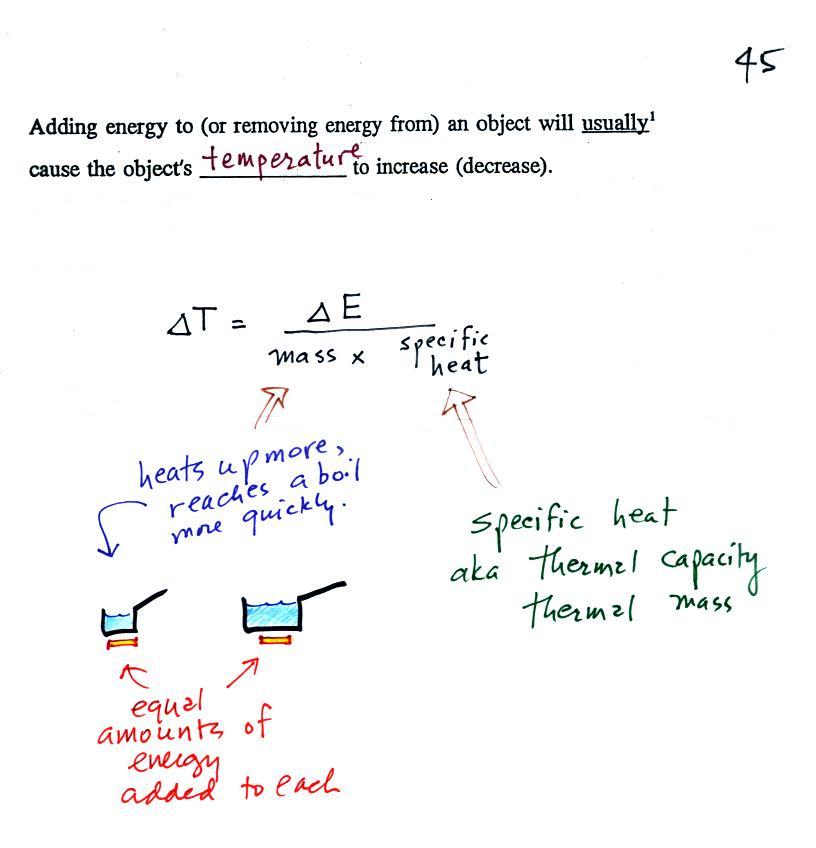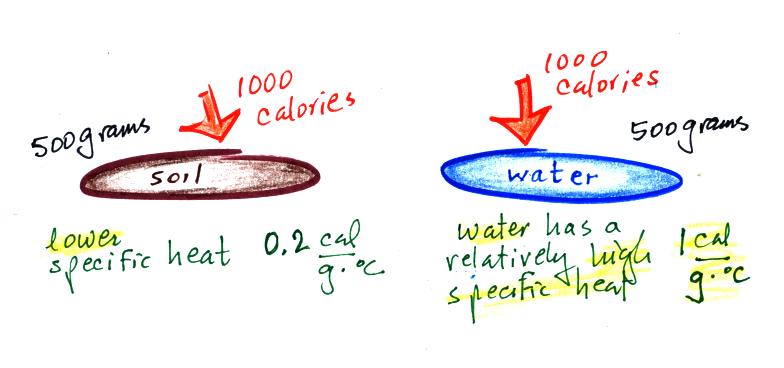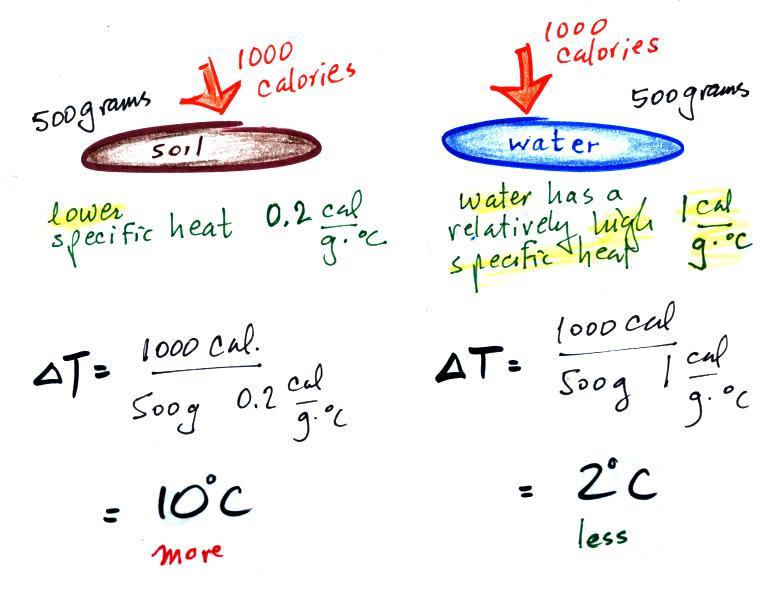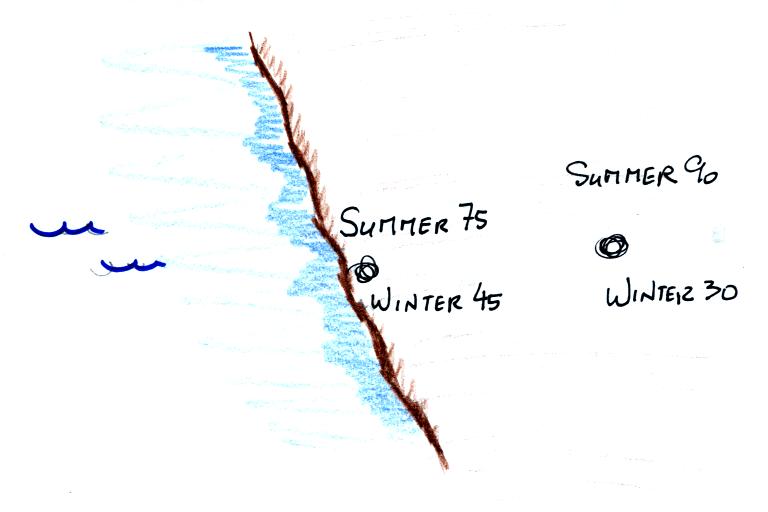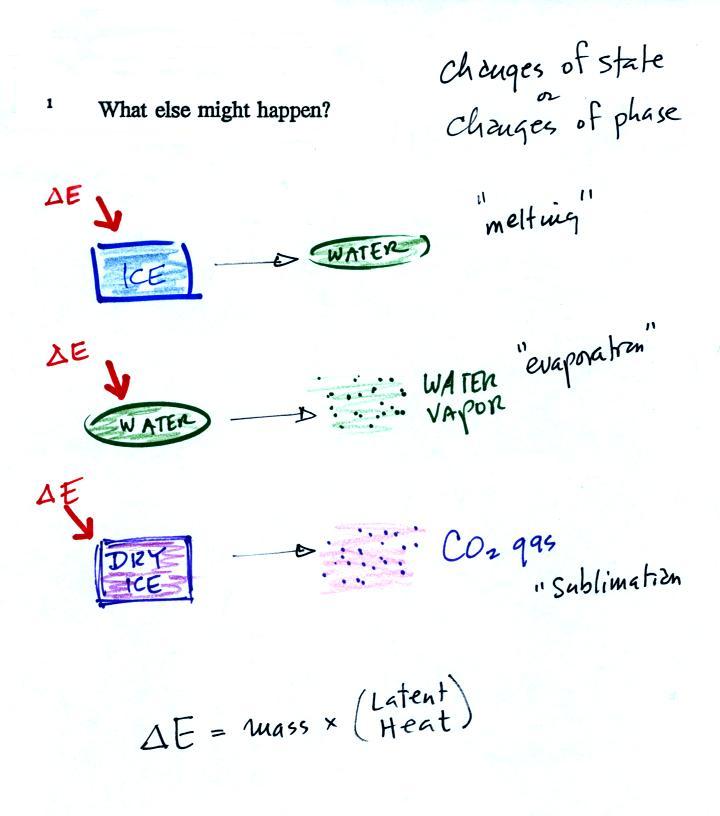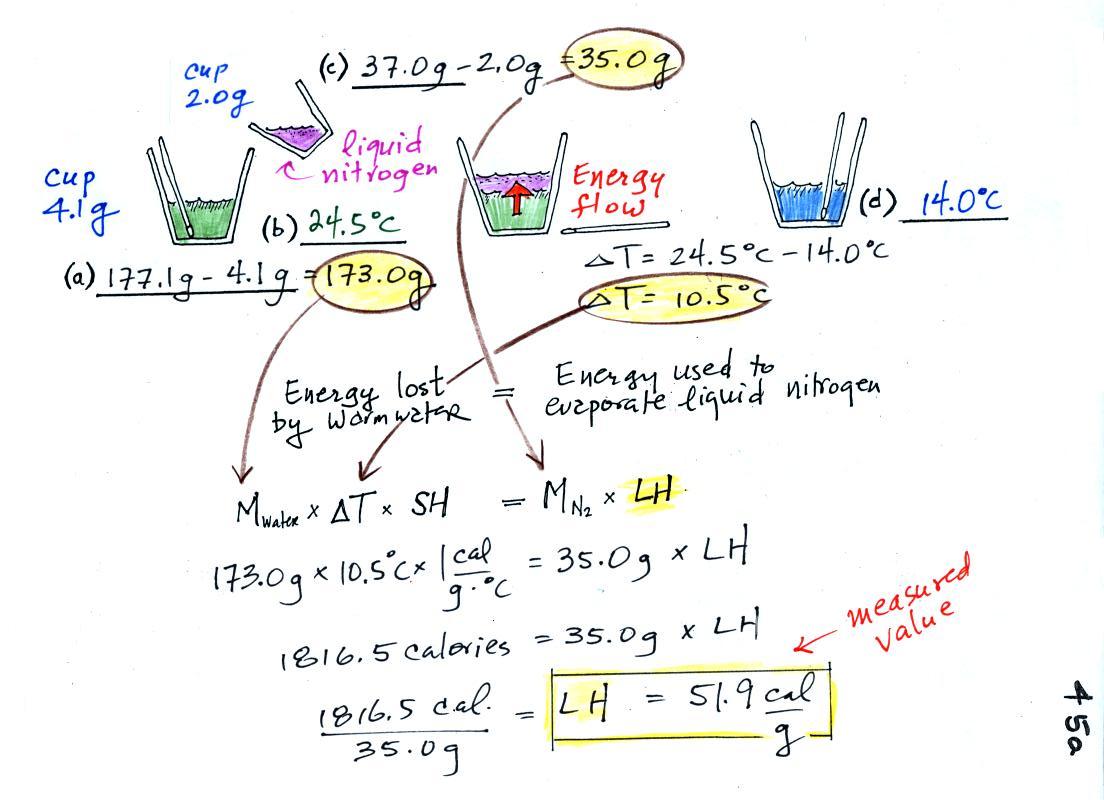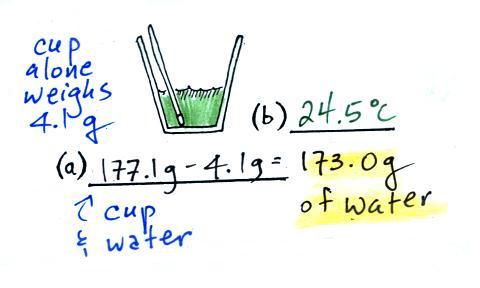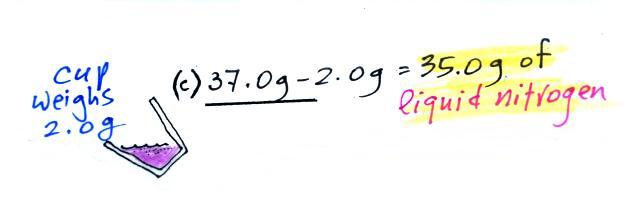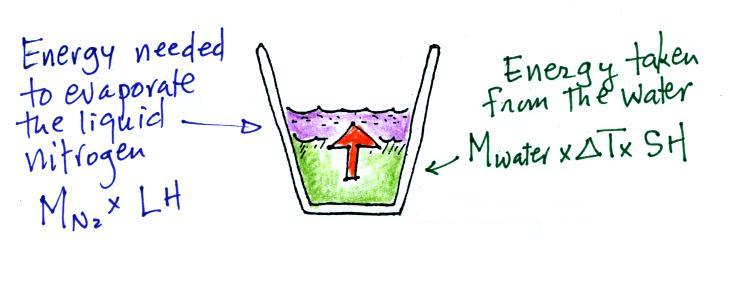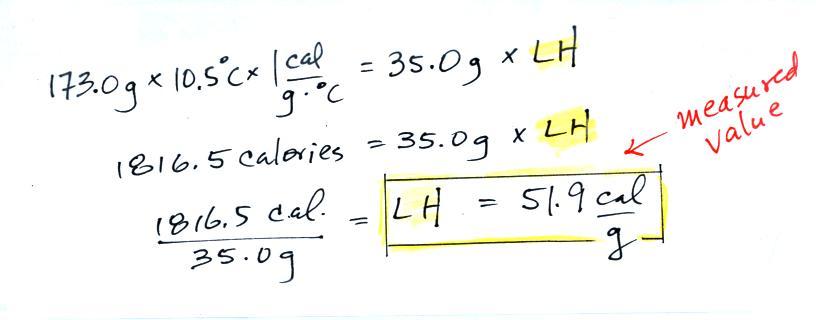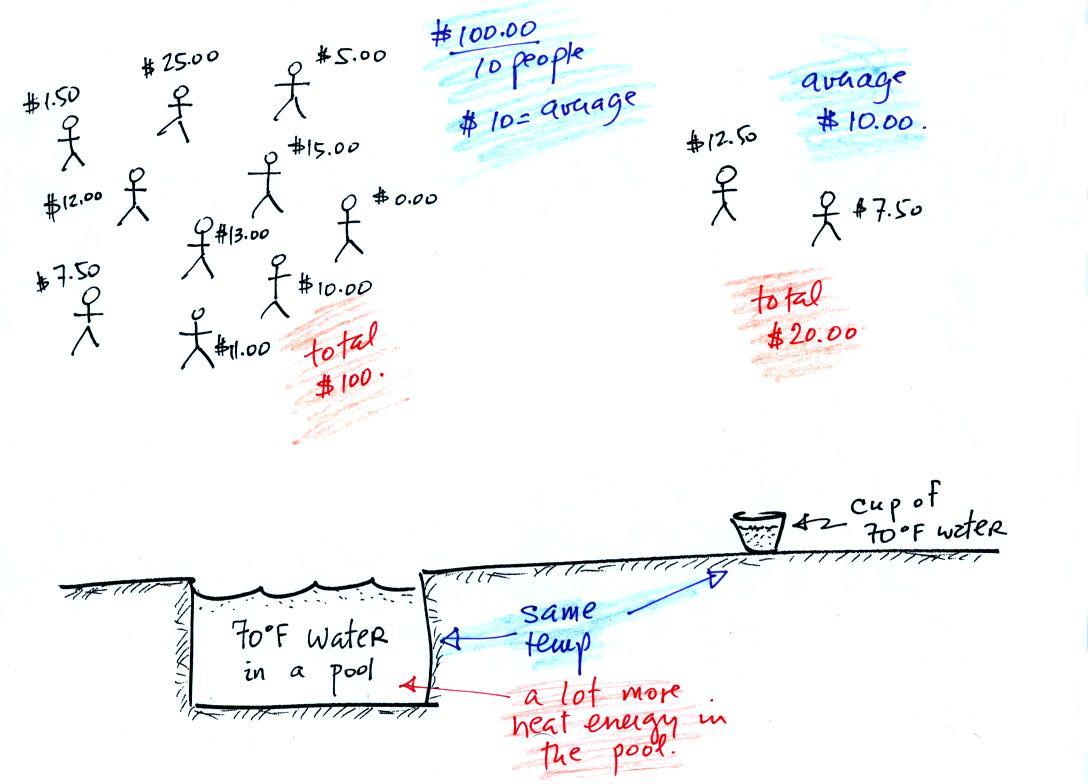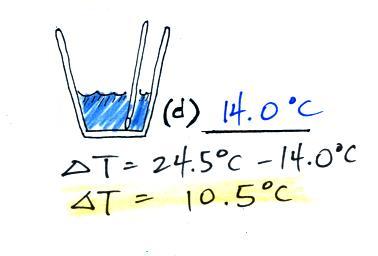
We started out with water that was
24.5 C, so that is a temperature
drop of 10.5 C.
It takes energy to turn liquid nitrogen into nitrogen gas.
The energy needed will be taken from the water (the red arrow below,
energy naturally flows from hot to cold).
Because the experiment was
performed in an insulated sytrofoam cup we
will assume all of the energy taken from the water is used to evaporate
nitrogen. Minimal energy flows into the room air or anything like
that. We will set the two equations above equal to each
other. This is an energy balance equation.
We know the mass of the nitrogen
that we started with and that was
eventually evaporated (41.9 g) and the mass of the water (184.0
g). We measured the ΔT (12.0 C) and we
know the specific heat of water (1 cal/g C). We substitute them
into the equation above and solve for LH, the latent heat of
vaporization of liquid nitrogen. Here are the details of the
calculation:
A
responsible & trustworthy student in
the class (though not a Buddhist monk it turns out) informed us that
the known value is 48 cal/g, so this measured value is pretty close to
the known value.
You add energy to something and its
temperature increases. The figure below
(p. 46 in the ClassNotes) shows you what happens inside an object when
it's temperature changes (a picture from a previous semester).
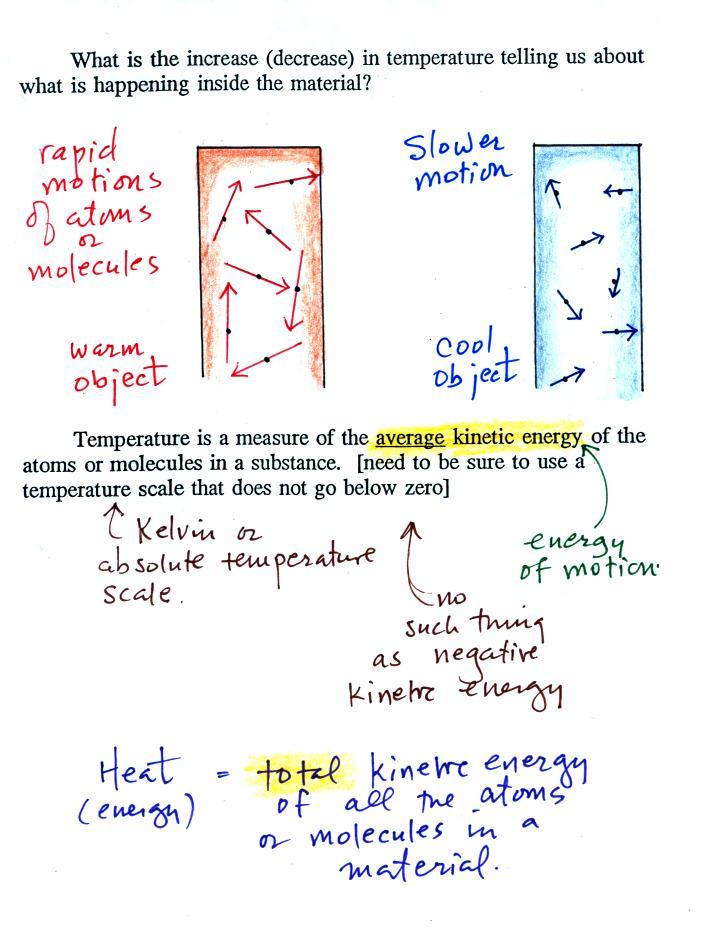
The atoms or molecules inside the
warmer object will be moving more rapidly (they'll be moving freely in
a gas, just "jiggling" around in a solid). Temperature provides a
measure of the average
kinetic energy of the
atoms or
molecules in a material.
You need to be careful what temperature scale you use
when
using
temperature as a measure of average kinetic energy. You must
use the Kelvin temperature scale because it does not go
below zero (0 K is known as absolute zero). The smallest kinetic
energy you can have is zero
kinetic energy. There is no such thing as negative kinetic energy.
You can think of heat as being the total kinetic energy of all
the
molecules or atoms in a material.
This next figure might make clearer
the difference between
temperature (average kinetic energy) and heat (total kinetic energy).
A cup of water and a pool of water
both have the same
temperature. The average kinetic energy of the water molecules in
the pool and in the cup are the same. There are a lot more
molecules in the pool than in the cup. So if you add together all
the kinetic
energies of all the molecules in the pool you are going to get a much
bigger number than if you sum the kinetic energies of the molecules in
the cup. There is
a lot more stored energy in the pool than in the cup. It would be
a lot harder to cool (or warm) all the water in the pool than it would
be the cup.
In the same way the two groups of
people and money (the people
represent atoms or molecules and the money is analogous to kinetic
energy). Both groups have the same same
average
amount
of money per person (that's analogous to temperature). The $100
held by the larger group at the
left is
greater than the $20 total possessed by the smaller group of people on
the right (total amount of money is analogous to heat).
And finally, speaking of
temperature scales
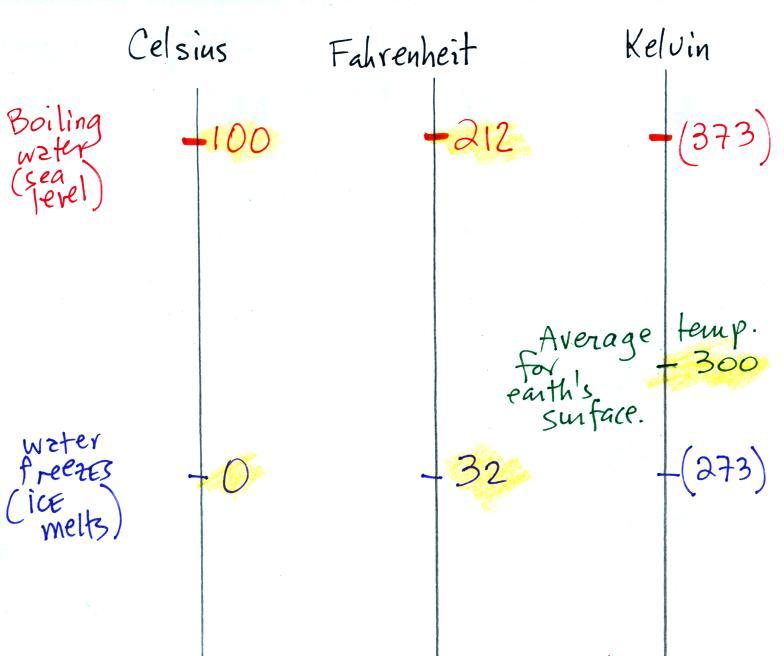
You should remember the
temperatures of the boiling point
and freezing
point of water on at least the Fahrenheit and Celsius scales (and
the Kelvin
scale if you want to). 300
K is a
good easy-to-remember value for the global annual average surface
temperature of the earth. That's a number you should try to
remember also (and remember that temperatures never go below 0 K).
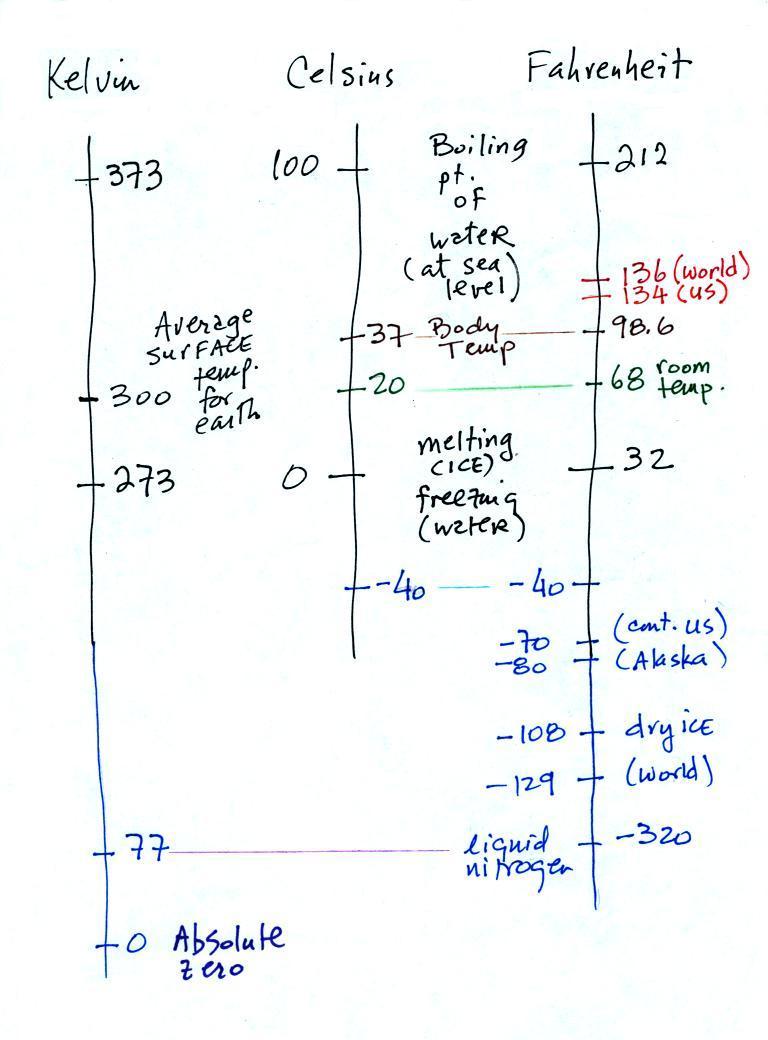
You certainly don't need to try to
remember all these
numbers. The world high temperature record was set in Libya, the
US
record in
Death Valley (low altitude [below sea level], surrounded by land, and
near 30 degrees latitude). I'll do some checking but I think that
someone might have decided that the 136 F world record value wasn't
reliable and the US value 134 F might be the new world record.
The continental US cold temperature
record of -70 F
was set in Montana and the -80 F value in Alaska. The world
record -129 F was measured at Vostok station in Antarctica. This
unusually cold reading was the result of three factors: high latitude,
high altitude, and location in the middle of land rather than being
near or
surrounded by ocean (remember water moderates climate).
Liquid
nitrogen is cold but it is still quite a bit warmer than absolute
zero. Liquid helium gets within a few degrees of absolute zero,
but it's expensive and there's only a limited amount of helium
available. So I would feel guilty bringing some to class.
